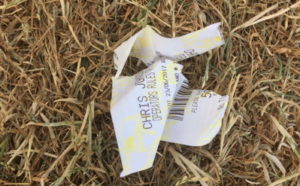Royal Ascot Betting Offers 2024
 Royal Ascot is a high point in the British horse racing social calendar with as much focus on the attendees as the races themselves. The five-day meeting is one of the most valuable on the planet with over £9.52M in prize money up for grabs over 19 group races (8 of which are group one). From 2021 each day has been expanded from 6 to 7 races, meaning there an additional 5 handicap races to be enjoyed over the week – 35 races total.
Royal Ascot is a high point in the British horse racing social calendar with as much focus on the attendees as the races themselves. The five-day meeting is one of the most valuable on the planet with over £9.52M in prize money up for grabs over 19 group races (8 of which are group one). From 2021 each day has been expanded from 6 to 7 races, meaning there an additional 5 handicap races to be enjoyed over the week – 35 races total.
A favourite of the late Queen Elizabeth II and the British Royal Family, the meeting can trace its history all the way back to Queen Anne in 1711. Day 3 (Thursday) is the main day of the festival featuring the Ascot Gold Cup, which the Queen’s horse Estimate won in 2013.
As with all big events like this the bookies will be pushing some fantastic promotions including free bets (for new and existing customers), money back, extra places and more. Visit this page throughout the meeting to get the most value from your bets. Further down the page you will also find information on race schedules, history, major statistics and more.
Royal Ascot Betting Offers for 2024
This event has not started yet, please check back nearer the time. For other offers see our main loyalty page.
Race Card, Schedule & Information

Since changing from 4 days to 5 days back in 2002 Royal Ascot is now attended by over 300,000 people in normal years. Whether you have tickets or will be watching on TV here are highlights of the five days.
Day One – Tuesday 18th June 2024
| Time | Race | Grade | Distance |
|---|---|---|---|
| 2:30 | Queen Anne Stakes | Group 1 | 1m |
| 3:05 | Coventry Stakes | Group 2 | 6f |
| 3:40 | Kings Stand Stakes | Group 1 | 5f |
| 4:20 | St James Palace Stakes | Group 1 | 1m |
| 5:00 | Ascot Stakes | Handicap | 2m 3f 210y |
| 5:35 | Wolferton Stakes | Listed | 1m 1f 212y |
| 6:10 | Cooper Horse Stakes | Handicap | 1m 6f 34y |
KEY: m – Miles, f – furlong(s), y – yards
Queen Anne Stakes (14:30)
 The only race that doesn’t run the risk of having its position moved during Ascot week, the Queen Anne Stakes was established in 1840 and was at one point known as the Trial Stakes. It got its current moniker in 1930 when it was named after the monarch that founded Ascot Racecourse.
The only race that doesn’t run the risk of having its position moved during Ascot week, the Queen Anne Stakes was established in 1840 and was at one point known as the Trial Stakes. It got its current moniker in 1930 when it was named after the monarch that founded Ascot Racecourse.
Open to horses aged 4 and over, the race is run over 1 mile on the straight. The weight is 9 stone, with fillies and mares being given 3 pounds whilst 4-year-olds from the southern hemisphere are given 1 pound. The one-mile chase for older 4-year-old horses has been won in the past by superstars including Frankel and Cape Cross and represents a jewel in the crown of flat racing.
Coventry Stakes (15:05)
This Group 2 offering is aimed at 2-year-olds and boasts a weight of 9 stone and 1 pound, with fillies getting a 3 pound allowance. Run over 6 furlongs on the straight, it was inaugurated in 1890 when it was named after the Master of the Buckhounds, who happened to be 9th Earl of Coventry. It was promoted to Group 2 in 2004.
King’s Stand Stakes (15:40)
The next race on the list is the King’s Stand Stakes, which was first run in 1860 and was actually the result of poor weather that year. The heavy going meant that the Royal Stand Plate couldn’t be run over its traditional 2 miles, so instead it was run as the Queen’s Stand Plate over the 5 furlongs that were suitable to take the horses.
It’s a race for horses aged 3 and up, with the weight being 8 stone 12 pounds for 3-year-olds and 9 stone 4 pounds for those aged 4 and over. Fillies and mares get a 3 pound allowance and the race is run over the 5 furlongs that it was run over in 1860.
St James’s Palace Stakes (16:20)

The first race we’re writing about that is limited in terms of the age and gender of horses entered into it is the St James’s Palace Stakes, which is limited to 3-year-old colts. The weight is 9 stone and it is run over 7 furlongs and 213 yards.
The race is named in honour of the Tudor royal residence of St. James’ Palace and was it was first run in 1834. It is common for horses that have done well in the 2,000 Guineas, Irish 2,000 Guineas and the Poule d’Essai des Poulains to enter this race, which gained Group 1 status in 1988.
Ascot Stakes (17:00)
Run over 2 miles, 3 furlongs and 210 yards, the Ascot Stakes is for horses aged 4 and over.
Wolferton Stakes (17:35)
First run in 2002 as part of the extension to Royal Ascot being a five day meeting, the Wolferton Stakes is a Listed offering for horses aged 4 and up. The following weight rules apply:
- Weight: 9 stone 3 pounds
- 5 pound allowance for fillies
- 5 pound penalty for Group 3 race winners
- 3 pound penalty for Listed race winners
Run right-handed over 1 mile, 1 furlong and 212 yards, the race is named after a village close to Sandringham House and is closed to winners of Group 1 and Group 2 races since August of the previous year.
Cooper Horse Stakes (18:10)
During the 2020 corona virus outbreak racing schedules were highly disrupted and this meant additional races were moved to Royal Ascot week. This proved to be a huge success so in 2021 organisers decided to expand the race cards from 6 to 7 races each day. The first of these new Ascot races is the Cooper Horse Stakes.
First run in 2020 this is a one mile 6 furlong middle-distance handicap that is open to horses aged four and over. The winner of the inaugural race, Fujaira Prince, went on to win the Ebor handicap in the same year. Expect a big field in excess of 15 for this one.
Day Two – Wednesday 19th June 2024
| Time | Race | Grade | Distance |
|---|---|---|---|
| 2:30 | Queen Mary Stakes | Group 2 | 5f |
| 3:05 | Kensington Palace Fillies’ Stakes | Handicap | 7f, 213y |
| 3:40 | Duke of Cambridge Stakes | Group 2 | 1m |
| 4:20 | Prince of Wales Stakes | Group 1 | 1m 1f 212y |
| 5:00 | Royal Hunt Cup | Heritage Handicap | 1m |
| 5:35 | Queen’s Vase | Group 2 | 1m 6f 34y |
| 6:10 | Windsor Castle Stakes | Listed | 5f |
KEY: m – Miles, f – furlong(s), y – yards
Queen Mary Stakes (14:30)

Rather obviously, the race is named after King George V’s consort, Queen Mary. It was first run in 1921 and, like the Coventry Stakes, was promoted to become a Group 2 offering in 2004. A race for 2-year-old fillies, the Queen Mary Stakes is run over 5 furlongs on the straight and boasts a weight of 9 stone.
Kensington Palace Stakes (15:05)
This was a brand new handicap race added in 2021 run over the famous old mile. Open to fillies’ and mares’ with a 0-105 rating. The inaugural race had a field of 18 with a 12/1 winner, great race for each-way betting.
Duke of Cambridge Stakes (15:40)

Introduced in 2004 as the Windsor Forest Stakes, the race was given its current title in 2013 in honour of the Duke of Cambridge, Prince William. The race is open to fillies and mares aged 4 and over and boasts the following weight rules:
- Weight: 9 stone
- 5 pound penalty for Group 1 race winners
- 3 pound penalty for Group 2 race winners
Run on the straight over 1 mile, the race came in in 2004 as part of a new series of races aimed at older fillies in the hope that it would stop them from being sent to stud early or being sent overseas.
Prince of Wales’s Stakes (16:20)
Open to horses aged 4 and over, the Prince of Wales’s Stakes boasts a weight of 9 stone with 3 pound allowances for both fillies and mares and 4-year-olds from the southern hemisphere. It is run right-handed over 1 mile, 1 furlong and 212 yards
Established in 1862 and named after the then-Prince of Wales who would go on to become King Edward VII, it was originally limited to 3-year-olds and run over 1 mile and 5 furlongs. It was discontinued in the wake of the Second World War because there was no Prince of Wales, then re-established in 1968. It was made a Group 1 offering in 2000, which was when the minimum age for horses was moved to 4-years-old.
Royal Hunt Cup (17:00)
Alongside the Ascot Gold Cup and the Queen’s Vase, this handicap is the final race in the triumvirate of offerings that boast a perpetual trophy for the winners. First run in 1843, it takes place on the straight over 1 mile and is for horses aged 3 and over.
Queen’s Vase (17:35)
Inaugurated in 1838, the Queen’s Vase was initially run over 2 miles and offered a gold trophy that had been donated by Queen Victoria. It received its current name in 1960 and was made a Group 2 race in 2017, having bounced around the gradings for a time before that. As with the Ascot Gold Cup and the Royal Hunt Cup, it is one of just three races that offers a perpetual trophy to the winner.
That race is for 3-year-olds with a weight of 9 stone, whilst fillies are given a 3 pound allowance and Group 1 race winners get a penalty of 3 pounds. It is run right-handed over 1 mile, 6 furlongs and 34 yards.
Windsor Castle Stakes (18:10)
Restricted to 2-year-olds with a weight of 9 stone 3 pounds, fillies get a 5 pound allowance in this race that is run over 5 furlongs on the straight.
Day Three – Thursday 20th June 2024
| Time | Race | Grade | Distance |
|---|---|---|---|
| 2:30 | Norfolk Stakes | Group 2 | 5f |
| 3:05 | King George V Stakes | Handicap | 1m 3f 211y |
| 3:40 | Ribblesdale Stakes | Group 2 | 1m 3f 211y |
| 4:20 | The Gold Cup Stakes |
Group 1 | 2m 3f 210y |
| 5:00 | Britannia Stakes | Heritage Handicap | 1m |
| 5:35 | Hampton Court Stakes | Group 3 | 1m 1f 212y |
| 6:10 | Buckingham Palace Stakes | Handicap | 7f |
KEY: m – Miles, f – furlong(s), y – yards
Norfolk Stakes (14:30)

One of the older Group 2 races, the Norfolk Stakes was first run in 1843 as the New Stakes, gaining its current moniker in 1973. It was promoted to Group 2 in 2006 and made part of the Breeders’ Cup Challenge when it became a qualifier for the Breeders’ Cup Juvenile Turf Sprint in 2018.
King George V Stakes (15:05)
Run right-handed over 1 mile, 3 furlongs and 211 yards, the King George V Stakes is a handicap race for 3-year-olds.
Ribblesdale Stakes (15:40)
Restricted to 3-year-old fillies with a weight of 9 stone, Group 1 race winners get a penalty of 3 pounds. Run right-handed over 1 mile, 3 furlongs and 211 yards, the race was named after the Master of the Buckhounds between 1892 and 1895, the 4th Baron Ribblesdale. Horses that do well here often go on to run in the Irish Oaks, with the Ribblesdale Stakes also welcoming horses that ran in the Epsom Oaks.
Ascot Gold Cup (16:20)
 Not to be confused with the race at Cheltenham that boasts the same name, the Ascot Gold Cup was first run in 1807 when it was a race for 3-year-olds and up, watched at the time by King George III and his wife Queen Charlotte. After Russia’s Tsar Nicholas I was in attendance in 1844, he offered a trophy for the race that was known as the Emperor’s Pate. The race took that on as a name until the Crimean War, at which point it returned to its original name.
Not to be confused with the race at Cheltenham that boasts the same name, the Ascot Gold Cup was first run in 1807 when it was a race for 3-year-olds and up, watched at the time by King George III and his wife Queen Charlotte. After Russia’s Tsar Nicholas I was in attendance in 1844, he offered a trophy for the race that was known as the Emperor’s Pate. The race took that on as a name until the Crimean War, at which point it returned to its original name.
Nowadays it is one of just three perpetual trophies awarded during the meeting, sitting alongside the Queen’s Vase and the Royal Hunt Cup. Open to horses aged 4 and over, the weight is 9 stone 1 pound for 4-year-olds and 9 stone 2 pounds for those aged 5 and over. There’s a 10 pound allowance for 4-year-olds from the southern hemisphere and 3 pounds for fillies and mares. The race is run right-handed over 2 miles, 3 furlongs and 210 yards.
The Gold Cup is the first leg in the Stayers triple crown that also includes the Goodwood Cup and the Doncaster Cup. The Gold Cup has been won on four occasions by Yeats with Lester Piggott the leading jockey with an amazing 11 wins and Aiden O’Brien lead trainer with 7 wins to date. Prize money for this race is expected to peak at around £430,000 with over £283,000 to the winner.
Britannia Stakes (17:00)
Open to 3-year-old colts and geldings, this handicap race is run over 1 mile on the straight. It was first run in 1928 and is a copy of the Royal Hunt Cup in terms of distance and the course it’s run on.
Hampton Court Stakes (17:35)
It’s easy enough to figure out where this race was named after, though it’s actually had several names over the years. It moved to Royal Ascot when the meeting was extended to five days to celebrate the Queen’s Golden Jubilee and that was when it was given its current title. The meeting was kept at five days and the race has remained in place since.
A race for 3-year-olds, winners of Group 1 and Group 2 races can’t enter and fillies get a 3 pound allowance on the 9 stone weight, whilst Group 3 race winners get a 4 pound penalty. It’s run right-handed over 1 mile, 1 furlong and 212 yards.
Buckingham Palace Stakes (18:10)
The Buckingham Palace stakes was originally an Ascot race added in 2020 when the meeting was expanded to five days. It was the only seven furlong handicap at the festival but it was last run in 2014 having been replaced by the Commonwealth Cup.
The race was added back in 2020 in an expanded card and re-added permanently in 2021. Open to 3y0+ runners the race has never been won more than once by the same horse. The leading jockey is Neil Callen with 3 wins and he rode both winners for leading trainer is Kevin Ryan.
Day Four – Friday 21st June 2024
| Time | Race | Grade | Distance |
|---|---|---|---|
| 2:30 | Albany Stakes | Group 3 | 6f |
| 3:05 | Commonwealth Cup | Group 1 | 6f |
| 3:40 | Duke of Edinburgh Stakes | Handicap | 1m 3f 211y |
| 4:20 | Coronation Stakes | Group 1 | 1m |
| 5:00 | Sandringham Stakes | Handicap | 1m |
| 5:35 | King Edward VII Stakes | Group 2 | 1m 3f 211y |
| 18:10 | Palace Of Holyroodhouse Stakes | Handicap | 5f |
KEY: m – Miles, f – furlong(s), y – yards
Albany Stakes (14:30)

First run in 2002, the Albany Stakes is limited to 2-year-old fillies with a weight of 9 stone. It’s run over 6 furlongs on the straight and was initially a Listed race known as the Henry Carnavon Stakes. It was given its current moniker in 2003 and was promoted to Group 3 two years later.
Commonwealth Cup (15:05)
The Commonwealth Cup is for 3-year-olds with a weight of 9 stone and 3 pounds. Fillies and mares receive a 3 pound allowance and southern hemisphere horses get 10 pounds given to them. Run over 6 furlongs on the straight, the race is the only one for 3-year-olds in the UK that allows geldings to compete.
One of the youngest races run during Royal Ascot, the Commonwealth Cup was inaugurated in 2015. That was part of a set of changes that came in because of a new programme of sprint races, with the Diamond Jubilee Stakes being closed to 3-year-olds at the same time. The Buckingham Palace Stakes was removed from the meeting in order to make room for it.
Duke of Edinburgh Stakes (15:40)
Inaugurated as the Bessborough Stakes in 1914, the race was renamed in honour of Prince Phillip, the Duke of Edinburgh in 1999. It is a handicap race that takes place over 1 mile, 3 furlongs and 211 yards, being open to 3-year-olds and over. Those that have done well in it have often gone on to impress at Group level.
Coronation Stakes (16:20)

Established in 1840, the Coronation Stakes was created in order to celebrate the coronation of Queen Victoria. It is common for horses that have competed in the likes of the 1,000 Guineas, Irish 1,000 Guineas and the Poule d’Essai des Pouliches to compete in it. That’s what Alpha Centauri did in 2018, winning the race in Ireland before heading home first in this offering.
Open to fillies that are 3-years-old, the Coronation Cup is run right-handed over 7 furlongs and 213 yards. The weight for the race is 9 stone exactly.
Sandringham Fillies’ Handicap Stakes (17:00)
A handicap race for fillies aged 3, the Sandringham Handicap is run over 1 mile on the straight. Known as the Fern Hill Rated Stakes for a time, it was a Listed race until the rules changed in 2018 and it no handicaps could be Listed or Group offerings.
King Edward VII Stakes (17:35)
Run right-handed over 1 mile, 3 furlongs and 211 yards, the King Edward VII Stakes is open to 3-year-old colts and geldings with a weight of 9 stone. Group 1 race winners receive a penalty of 3 pounds. The event was first run in 1834 when it was known as the Ascot Derby, being renamed in honour of King Edward VII in 1929. It often features horses that took part in The Derby about 4 weeks earlier.
Palace Of Holyroodhouse Stakes (18:10)
This is another new race that was added to an enlarged meeting in 2020 and kept on from 2021 onwards. The 5 furlong handicap boasted a big field in its first year with 21 runners and looks set to be a highlight of the Friday card.
Day Five – Saturday 22nd June 2024
| Time | Race | Grade | Distance |
|---|---|---|---|
| 2:30 | Chesham Stakes | Listed | 7f |
| 3:05 | Jersey Stakes | Group 3 | 7f |
| 3:40 | QE II Jubilee Stakes | Group 1 | 6f |
| 4:20 | Hardwicke Stakes | Group 2 | 1m 3f 211y |
| 5:00 | Wokingham Stakes | Heritage Handicap | 6f |
| 5:35 | Golden Gates Stakes | Handicap | 1m 1f 212y |
| 6:10 | Queen Alexandra Stakes | Conditions | 2m 5f 142y |
KEY: m – Miles, f – furlong(s), y – yards
Chesham Stakes (14:30)
 This race is for 2-year-olds that have been sired by a horse that was won a race of 1 mile and 2 furlongs or longer in length. The weight is 9 stone 3 pounds, with fillies given a 5 pound allowance, Group race winners given a penalty of the same weight and Listed race winners a penalty of 3 pounds.
This race is for 2-year-olds that have been sired by a horse that was won a race of 1 mile and 2 furlongs or longer in length. The weight is 9 stone 3 pounds, with fillies given a 5 pound allowance, Group race winners given a penalty of the same weight and Listed race winners a penalty of 3 pounds.
The race is named after the Master of the Buckhounds between 1900 and 1901, the 3rd Baron of Chesham, and was first run in 1919.
Jersey Stakes (15:05)
Run on the straight over 7 furlongs, the Jersey Stakes is for horses aged 3 and up with a weight of 9 stone 1 pound. There’s a 3 pound allowance for fillies as well as a 5 pound penalty for horses that have won Group 1 and Group 2 races and a 3 pound penalty for those that have won Group 3 offerings.
Established in 1919 as a replacement for the Triennial Stakes, it was named in honour of the Master of the Buckhounds from the late 18th century, the 4th Earl of Jersey.
Queen Elizabeth II Jubilee Stakes (15:40)
Run over 6 furlongs on the straight, the Queen Elizabeth II Jubilee Stakes is a race for horses aged 4 and up, though 3-year-olds from the southern hemisphere are allowed. The weight for the race is 9 stone 3 pounds, with fillies and mares given a 3 pound allowance.
The race was inaugurated in 1868 as the All-Aged Stakes, becoming the Cork and Orrery Stakes in 1926. In 2002 it was given the moniker of the Golden Jubilee Stakes, at which point the race was upgraded to group one. It was then renamed again when Queen Elizabeth celebrated her Diamond Jubilee in 2012, again when she celebrated her Platinum Jubilee in 2022 and finally renamed in honour of her in 2023 following her death.
The race has been part of the Global Sprint Challenge since 2005. Lester Piggott as leading jockey has won the race 9 times.
Hardwicke Stakes (16:20)
Open to horses aged 4 and over, the Hardwicke Stakes is run right-handed over 1 mile, 3 furlongs and 211 yards. The weight is 9 stone 1 pound, with fillies and mares receiving a 3 pound allowance. Named in honour of the 19th century Master of the Buckhounds, the 5th Earl of Hardwicke, horses that do well in this offering often run in the King George VI and Queen Elizabeth Stakes at Ascot in July.
Wokingham Stakes (17:00)
Another handicap, the Wokingham Stakes is open to horses aged 3 and over. It is run over 6 furlongs on the straight and was established in 1813. It was originally split into different classes but was made into one race in 1874 and is named after the market town not far from Ascot.
Golden Gates Stakes (17:35)
This new handicap introduced in 2020 and retained from 2021 held over one mile and two furlongs and is another big field race good for one last each-way bet before Ascot ends. The inaugural winner, Highland Chief, went off at 20/1.
Queen Alexandra Stakes (18:10)
 The final race to tell you about is the Conditions race, the Queen Alexandra Stakes. It takes place over 2 miles, 5 furlongs and 143 yards and was established in 1864 when it was known as the Alexandra Plate. Named after the consort of King Edward VII, the race was given its current moniker in 1931 and took on its current length when Ascot’s track was shortened in 2005.
The final race to tell you about is the Conditions race, the Queen Alexandra Stakes. It takes place over 2 miles, 5 furlongs and 143 yards and was established in 1864 when it was known as the Alexandra Plate. Named after the consort of King Edward VII, the race was given its current moniker in 1931 and took on its current length when Ascot’s track was shortened in 2005.
The race is traditionally the final race of the meeting, allowing horses that ran in the opening race to take part in it. It is the longest flat race in the UK, meaning that hurdling horses are often entered into it. Open to horses aged 4 and up, the following weight rules apply:
- Weight: 9 stone for 4-year-olds, 9 stone 2 pounds for horses aged 5 and up
- 5 pound allowance given to fillies and mares
- Class 1 race winners receive a 5 pound penalty per race won*
- Class 2 and 3 race winners receive a 3 pound penalty per race won*
*This is to a maximum of 10 pounds and excludes handicap race wins.
History of Royal Ascot and Ascot Racecourse

Ascot (or East Cote as it was known then) was famously founded by Queen Anne in 1711. The history of horse racing in Britain owes a lot to Queen Anne who began a long love affair between Ascot and the Royal family in Britain. Ascot is only 6 miles from Windsor Castle and whilst out riding the Queen noticed an open area of heath land that looked superb for “horses to gallop at full stretch”. Later that year the first horse race took place.
The first ever race was the ‘Her Majesty’s Plate’ contested on August 11th 1711 for a prize of 100 guineas, the event was in fact three individual 4 mile heats contested by seven horses. Each horse carried 12 stone in weight and were ‘English Hunters’ rather than the flat thoroughbreds we know today. A thoroughbred wouldn’t have been able to run the original race of three heats equivalent in distance to a grand national each! No record exists of the name of the first winner but in honour of it founder the first race of each royal meeting is always the Queen Anne Stakes.

The racecourse was laid out originally by William Lowen and the first ever building was built in 1794 by a local builder, it held 1650 people. In 1813 an act of parliament was passed to ensure the racecourse remained public, this culminated in a new public grandstand that was built in 1939 at the staggering cost (for the time) of £100,000.
A second act was passed 100 years later in 1913 to establish the Ascot Authority, a group that manages the racecourse to this day. Up until 1945 the only meeting to be held at Ascot was the four-day Royal meeting although other meetings have now been added through the summer, including the climax of the flat season, Champions Day, held in mid-October each year. Ascot now stages 26 days of racing each year with 18 flat meetings between May and October.
The King George VI and Queen Elizabeth group one flat race is the most prestigious race held at Ascot and runs in July each year. The race, established in 1951 to commemorate the new Queen Elizabeth, is open to three year olds and older and run over 1 mile and 4 furlongs with a prize fund over £1,250,000 and nearly £710,000 for the winner.



